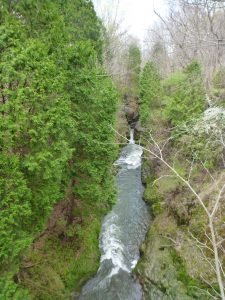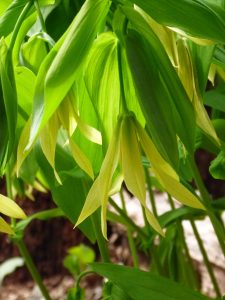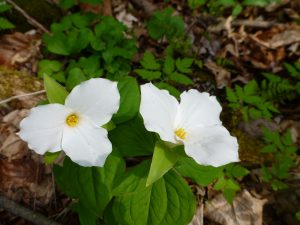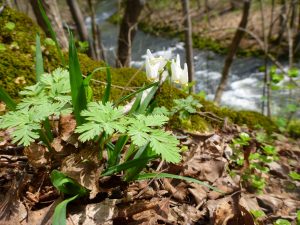
Ohio’s early wildflowers often make seekers scour the forest floor to find them.
But after a long winter, nature lovers will delight when they spot a minuscule harbinger of spring (also known as salt and pepper), which bears clusters of flowers only a quarter-inch wide.
As spring progresses, the flowers become more more showy. People walking in the woods won’t have to look as hard to enjoy the variety of plants in bloom.
Indeed, the question might be where to look first, with so many blossoms vying for attention.
Such was the case Easter weekend at Clifton Gorge State Nature Preserve, near Yellow Springs, Ohio.
Although the forest floor is sadly overrun with invasive plants near the trailhead, the farther along the path, the more pristine the landscape.
Invasive plants are a threat to Ohio’s most beloved wildflowers. Honeysuckle, privet, burning bush and other imports to the United States have escaped the garden bed and are crowding out delicate wildflowers that are no match for the invading bullies.
Bush honeysuckle, for example, is the first to leaf out in spring and the last to lose leaves in fall. That keeps other plants on the forest floor from receiving the water and light they need to thrive. And if that weren’t enough, honeysuckle is alleopathic; it produces a chemical that can prevent other seeds from germinating.

Honeysuckle and similar berry-producing invaders spread with the help of birds, which ingest the fruits and deposit the seeds later, far from the mother plant.
A visit to a preserve like Clifton Gorge can reinforce why so many of us battle invasive plants, even though it requires repeated eradication efforts.
Clifton Gorge is one of those “That can’t be Ohio” bits of geography, a dolomite and limestone gorge formed by glaciers eons ago. The Little Miami River rushes through the gorge, which has narrows and rapids and giant boulders left behind by the receding ice.
Spring wildflowers at the 268-acre preserve are phenomenal. My hiking companion Karen and I missed the spring beauties and harbingers of spring, but many other plants were in bloom.
I was excited to see a single clump of merrybells growing near the path; it was the first time I’d seen this native plant in its natural home.
But that one clump of hanging bells was overshadowed a bit farther along by a veritable blanket of the mellow yellow flowers.
Dutchman’s-breeches, wild blue phlox, Virginia bluebells and trilliums flanked both sides of the trail.
A few wat

erfalls tumbled over the side of the cliffs, fed by recent rains. And the sound of the rushing river followed us most places along the trail.
The trail is not difficult, but it is probably wise to be sure-footed. Tree roots and rocks protrude from parts, making tripping or twisting an ankle a real possibility.
The trail leads from Clifton Gorge State Nature Preserve into John Bryan State Park, another great place to explore.
But we left that for another day.
Conclusion: Clifton Gorge is worth a walk any time of year, but it is especially appealing in spring with so many flowers in bloom.





Beautiful flowers !